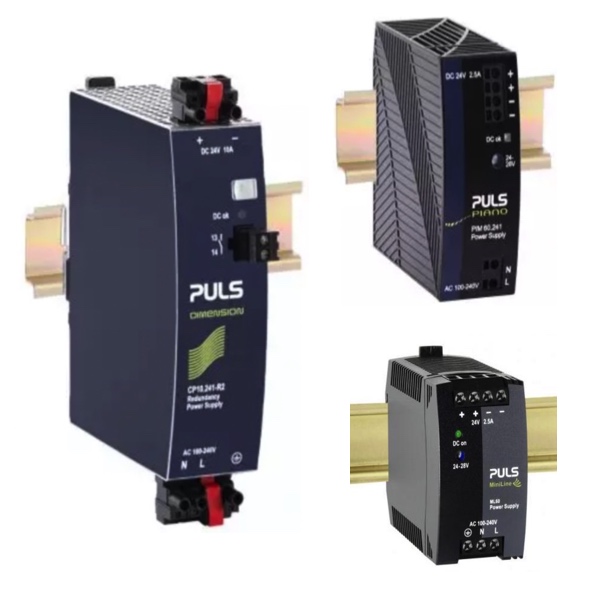PULS Power Supplies

PULS power supplies are efficient, reliable, and deliver high performance. They are well-built, enabling them to withstand tough industrial conditions. This is because their design ensures the strength and durability needed for use in harsh environments. Features found in many PULS field power supplies that further help ensure problem-free, long-term use include numerous advanced protection mechanisms that can be divided into three basic categories: those that protect the power supply, those that protect against power supply failures, and those that virtually eliminate the possibility of adverse effects on connected devices.
PULS places emphasis on compact, space-saving designs. A PULS power supply is usually smaller than alternative models, making it ideal for applications with limited space. Yet incredibly, a PULS power supply can potentially provide far more power than its size suggests. They are extraordinary, must-have items for any sector in which power is required and where space is at a premium.
PULS power supplies boast many outstanding attributes. One we find particularly noteworthy is their wide input voltage range. This enables us to use them in a huge assortment of applications, many of which, for example, can be found in the global 24 V industrial automation 'bus world'. They also provide a stable and consistent output voltage, typically ranging from 12V to 48V, to suit various industrial applications.
FAQs
What are screw terminals used for?
Screw terminals are used for connecting electrical wires to devices or equipment, providing a secure and reliable connection by clamping the wire under a screw.
How to Select and Size a Power Supply
A power supply alters power from one type to another and ensures that the voltage being delivered is the proper level, with the right characteristics, to enable equipment to function properly.
Power rating
If a power supply is rated for 5 amps at 24 VDC, (where voltage times amperage equals total wattage) the power rating for that power supply is roughly 120 Watts. This rating is very important because if this number is exceeded, it can cause a failure of the power supply and potentially damage other hardware wired downstream or on the load side of the device. To avoid this failure is important that the power supply is sized correctly.
Sizing a power supply
To properly size a power supply, identify what devices will be reliant on the power supply and what their total power consumption will be. The sum of all power to be delivered needs to be less than the total power rating of the power supply. For example, if the devices combined for a total of 100 Watts, then a 5 AMP power supply, which is rated for up to 120 Watts, would be sufficient. However, if the sum of those devices' total power requirement is greater than that of the power supply rating, then a different power supply should be selected. It is important to allow for a buffer or safety factor. When sizing a power supply, never select a power supply that is rated for the same amount of power as the total power requirement of all of the devices. Oversizing the power supply will allow for changes and additions that may occur in the future.

